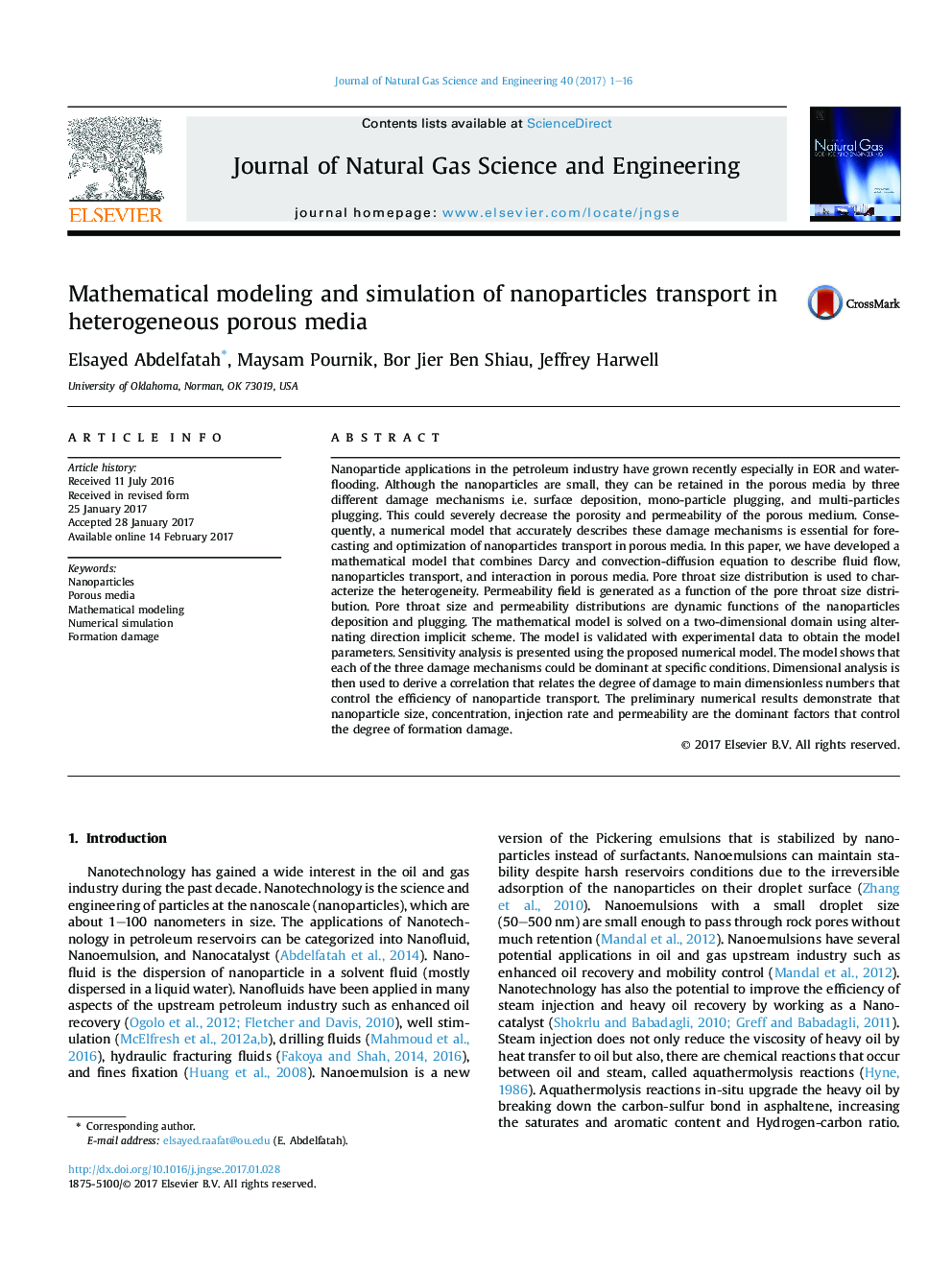| کد مقاله | کد نشریه | سال انتشار | مقاله انگلیسی | نسخه تمام متن |
|---|---|---|---|---|
| 5485065 | 1523003 | 2017 | 16 صفحه PDF | دانلود رایگان |
- Mathematical model is proposed for nanoparticles transport in porous media.
- Numerical simulation in two-dimensional is used to assess the interaction between nanoparticles and porous media at different conditions.
- Nanoparticles transport in porous media can cause formation damage.
- The key parameters that control the damage are nanoparticle size, concentration, and injection rate of nanoparticles.
- Dimensional analysis is used to relate the degree of damage to the main dimensionless numbers.
Nanoparticle applications in the petroleum industry have grown recently especially in EOR and waterflooding. Although the nanoparticles are small, they can be retained in the porous media by three different damage mechanisms i.e. surface deposition, mono-particle plugging, and multi-particles plugging. This could severely decrease the porosity and permeability of the porous medium. Consequently, a numerical model that accurately describes these damage mechanisms is essential for forecasting and optimization of nanoparticles transport in porous media. In this paper, we have developed a mathematical model that combines Darcy and convection-diffusion equation to describe fluid flow, nanoparticles transport, and interaction in porous media. Pore throat size distribution is used to characterize the heterogeneity. Permeability field is generated as a function of the pore throat size distribution. Pore throat size and permeability distributions are dynamic functions of the nanoparticles deposition and plugging. The mathematical model is solved on a two-dimensional domain using alternating direction implicit scheme. The model is validated with experimental data to obtain the model parameters. Sensitivity analysis is presented using the proposed numerical model. The model shows that each of the three damage mechanisms could be dominant at specific conditions. Dimensional analysis is then used to derive a correlation that relates the degree of damage to main dimensionless numbers that control the efficiency of nanoparticle transport. The preliminary numerical results demonstrate that nanoparticle size, concentration, injection rate and permeability are the dominant factors that control the degree of formation damage.
Journal: Journal of Natural Gas Science and Engineering - Volume 40, April 2017, Pages 1-16
